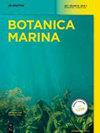评估葡萄牙海洋环境中的真菌:有多少种?
IF 1.4
4区 生物学
Q2 MARINE & FRESHWATER BIOLOGY
引用次数: 0
摘要
摘要:本文综述了过去30年来在葡萄牙海洋环境(沙滩、盐沼和码头)中收集的海洋真菌的多样性以及新数据的结果。已报道的真菌种类有190种(主要通过形态学鉴定,同时通过分子方法鉴定的有63种),其中156种目前被列为海洋真菌,网址为www.marinefungi.org。22种新物种是葡萄牙独有的。在葡萄牙观察到77种海洋物种的基质特异性,但考虑到在世界其他地区报道的这些物种中的一些在多个基质上发生,减少到26种。世界范围内的数据也证实了一个由20多种综合性海洋真菌组成的核心群体,它们在不同类别的基质(木质、草本和其他海洋来源)中定居。大多数海洋物种完全是物种(100)或物种/寄生虫/病原体(27)。温带(85种)和世界性(45种)占优势,热带和热带/亚热带也有分布(分别为7种和4种)。子囊菌属为优势群(184种),以无性形态居多(120种);有少量担子菌科(5种)和毛菌科(1种)。木犀acrostalagus luteoalbus, tenuissimum,黑孢子菌sphaerica, boydii sedosporium vesicarium Stemphylium lixii木霉是葡萄牙的新记录。其他在葡萄牙首次在新基质上分离到的物种有:Stachybotrys chartarum(来自海水),Corollospora maritima和Zalerion maritima(来自沙子),Lulworthia cf. purpurea(来自漂草)。本文章由计算机程序翻译,如有差异,请以英文原文为准。
Assessing fungi in Portuguese marine environments: how many species?
Abstract The present review documents the diversity of marine fungi collected in Portuguese marine environments (sandy beaches, salt marshes and marinas) from studies over the past 30 years and results from new data. One hundred and ninety fungal species are reported (mainly identified by morphology, with 63 species at the same time identified by molecular approaches), of which 156 are currently listed as marine fungi in www.marinefungi.org . Twenty-two new species are exclusive to Portugal. Substratum specificity was observed in Portugal for 77 marine species but reduced to 26 considering the occurrence on multiple substrata for some of these species reported in other parts of the world. Worldwide data also confirmed a core group of more than 20 generalist marine fungi, which colonized the different categories of substrata (woody, herbaceous, and other marine sources). Most marine species are exclusively saprobes (100) or saprobe/parasite/pathogen (27). Temperate (85) and cosmopolitan (45) species are dominant, but some species were also found in tropical or tropical/subtropical regions (7 and 4, respectively). Ascomycota species were the dominant group (184), mostly as asexual morphs (120); with few Basidiomycota (5 species) and Mucoromycota (1 species). Acrostalagmus luteoalbus , Cladosporium tenuissimum , Nigrospora sphaerica , Scedosporium boydii , Stemphylium vesicarium , and Trichoderma lixii are new records for Portugal. Other species were isolated in Portugal for the first time on new substrata: Stachybotrys chartarum (from seawater), Corollospora maritima and Zalerion maritima (from sand), and Lulworthia cf. purpurea (from a drift culm).
求助全文
通过发布文献求助,成功后即可免费获取论文全文。
去求助
来源期刊

Botanica Marina
生物-海洋与淡水生物学
CiteScore
4.10
自引率
4.50%
发文量
43
期刊介绍:
Botanica Marina publishes high-quality contributions from all of the disciplines of marine botany at all levels of biological organisation from subcellular to ecosystem: chemistry and applications, genomics, physiology and ecology, phylogeny and biogeography. Research involving global or interdisciplinary interest is especially welcome. Applied science papers are appreciated, particularly when they illustrate the application of emerging conceptual issues or promote developing technologies. The journal invites state-of-the art reviews dealing with recent developments in marine botany.
 求助内容:
求助内容: 应助结果提醒方式:
应助结果提醒方式:


